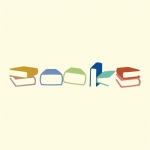Author: Hggns
-
Ghosts and Daydreams
This isn’t a particularly good photo- and that’s kind of why I posted it. Because it’s also not a particularly good print. Don’t get me wrong, I’m excited by some of the things going on here, but the whole spirit of my studio work this Fall is to try different experiments, so I never really…
-
Team of Rivals
I’m posting this pic of a collaboration I did with ceramic artist Donna Schnitzer for a show at Republic Plaza called Interplay. It was designed to hightlight the professional artist/ mentor-to- student relationships the Art Students League of Denver wants to encourage. In this case, Donna is a long time, very experienced professional ceramic artist herself…
-
Of Hacks and Boobs
I promised a quick finish to my last books and pop culture post with an installment about current comics. I also promised shorter posts. One out of two ain’t bad. Comics: There has been very little need to marginalize comics over the years; they’ve done a great job of doing that for themselves. This has…
-

Read Flag!
It’s Banned Books Week. Though it’s been a busy Summer, I’ve gotten quite a bit of reading in. Evenings and mornings have mostly been spent catching up on my reading on the back porch, thankfully relatively cool this summer. Here is what I’ve been reading. Rather than compile a comprehensive entry, which I’ve identified as a reason…
-
Free Workshops This Fall
I’m doing a series of free workshops at the Denver Public Library again this Fall. They’re short, drop-in style intros to the basics of monotypes. If you are considering my upcoming full, 8-week workshop at the Art Students League, which starts September 16, then why not come down to Byers Branch, 675 Santa Fe Dr,…
-
Video Killed the Monotype Star?
I’ve posted this on Facebook, but I’m putting it here, partially to archive it. It’s a 15 second spot produced by Colorado Public Television 12 producer Joshua Hassel as a thank you for exhibiting my work in their offices. Josh was a pioneering gallery owner in Denver in the 80’s ( he showed my work),…
-
Healthy Future
I’m mailing a small check to Kaiser today. It’s a two-block walk to the mailbox; weather, H75/L43, P/C, no chance of showers. A slight bit of exercise, but essentially, it’s a very bland-seeming denouement to a tale that started, for me, about 5 years ago. I’m updating it now, in the interest of writing a…
-
Waiting For the Sun
We haven’t had a winter like this in quite a while. It’s postponed a lot of printing days, though some have fallen victim to the Month of Printmaking event I’m working on, too. Our guide for that just went to press. I’m going to put up a downloads section on this site and put a…
-
Living Large
Large work has been a priority for me last Fall, and didn’t happen quite as much as I’d like, so I extended “printing season” into December. I went down to Open Press ( a somewhat legendary print studio in Denver ) and started on 2 30×42” monotypes, one of which was completed, and will…
-
Flour Power
People talk about architecture and often they refer to homes and offices. Industrial architecture is getting increased attention, though. This is especially true with waterfronts. Buffalo’s riverfront/lakefront areas are a good example. Where once heavy industry and commerce monopolized these areas, now urban planners and cultural custodians are moving in. There are complex issues to…